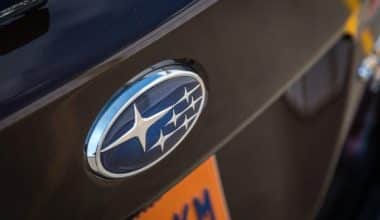Without uncertainty, Nintendo is the most well-known video game company. Nintendo has not fully embraced the current era of competitive e-sports, but their Switch system and playing card products have always been fun to play. Nintendo was in existence over a hundred years ago to make cards for the game Hanafuda. This fact is not as well known as the company’s popular products today. Many generations ago, Nintendo Co., Ltd. made great board games and video games. The establishment of Nintendo was in 1889 and ran as a card business until 1949. Hand-drawn pictures and designs were useful for making a lot of Hanafuda cards and different versions of the game. This article contains the history and evolution of the Nintendo GameCube logo. Relax and enjoy your reading.
About Nintendo
Europeans and Americans who don’t care about video games would find the word “Nintendo” to be a meaningless collection of sounds. Three hieroglyphs make up this name, which in Japanese culture has a hidden meaning. The Japanese letter nin-ten-do features a different hieroglyph for each letter. This hieroglyphic interpretation translates as “the temple of free Hanafuda” (cards or card players). Thus, the simple answer is that the company started off by making playing cards.
Over the duration of the company’s existence, Nintendo’s visual identity has undergone multiple redesigns, but only two of the emblems have undergone any substantial alterations. Almost all of the modifications, whether they were in Japanese or English, were based on a single logotype.
The business, now well-known for its video games, was originally established in 1889 as a manufacturer of playing cards, therefore its initial symbols were typical for the field in which the company specialized.
Initial Logo for The Nintendo
Even though the company has a long history, Nintendo also uses the same logo, at least in terms of font, since 1967, with only a few small changes from the original. Before deciding on the well-known racetrack cage for the letters, the company tried out a lot of changes throughout the years. Thanks to the company’s distinctive logo design’s simplicity, the brand has been recognizable for decades. The Nintendo brand seems to have purposefully chosen to keep its design and feel in contrast to its competitors, given the millions of admirers it has accrued since the 1970s.
The Nintendo emblem is “expressive,” “intelligent,” and “precise,” according to experts, precisely like the company’s video game products. Red and white are used in the most recent version, which was accepted in 2016. It differs from the previous grey color scheme. The current logo’s original 1967 design hasn’t undergone much modification since then. The toy known as Ultra Machine, which was produced in the same year, was the first Nintendo product to bear this recognizable insignia.
Nintendo began to reach the American and European markets in the 1950s. This required a change from the hieroglyphics used in Japan and the adoption of a Latin alphabet logo in the west. The Westernized variant, also referred to as the Ace of Spades logo, was primarily useful on the company’s Westernized card decks.
Nintendo Logo Elements Design
A key element in that accomplishment is the use of a simple yet effective design for the company’s logo. Nintendo increases customer loyalty by employing a straightforward, reliable emblem that aids in maintaining its recognition.
Symbol for Nintendo
Rather than being a picture or symbol, the modern logo is essentially a wordmark. The design is nonetheless striking while being rather simple. The company retains the racing cage, but this time paints it white with a red rectangle background. This version demonstrates the company’s principal interest, gaming, without diverting users.
Nintendo Font
Before being first translated into the Roman Alphabet in the West, the name Nintendo was once written in Japanese Kanji characters. The company experimented with several fonts before settling on the 1967 edition, but the original version for international markets had a flowing script. The font hasn’t changed since then. Despite not being a proprietary font, it has developed into a familiar symbol that links the present to the company’s heyday.
Nintendo Color
Another departure from the previous red was that the company had only ever used a single grey color scheme between 2006 and 2016. The company went back to its original red and white color scheme from 1975 to 2016, but with the colors inverted. Designers speculate that the Nintendo Switch presentation, the company’s most recent product, may have anything to do with the color change.
What Does the Nintendo Logo Represent?
Nintendo began its adventure in 1889 by making playing cards. Three hieroglyphs, which stood for “nin”, “ten,” and “do,” were used as the company’s inaugural logo. The best way to translate this sentence from Japanese is still up for debate. The version that is now in use is “Leave luck/fate to heaven.”
Does Nintendo Have a Japanese Logo?
The first logo in Kanji, the Japanese writing system, was the three letters spelled as (Nin) (ten) (d), from the beginning and before it began to spread outside of Japan. This saying, albeit still controversial, is frequently translated as “Leave fate/luck to heaven.”
Did Nintendo Change Their logo?
Nintendo of America has completely rebranded, returning to the company’s original red and white color scheme.
Gamecube Nintendo Logo
The Nintendo GameCube came out in 2001–2002. It replaced the Nintendo 64 as the most popular game console at the time. Its creators were able to produce a game system that could compete with “monsters” like the Sony PlayStation 2 and Microsoft Xbox on the global market. The Nintendo model was thus the first in its line to include a cutting-edge data reading system that made it possible for it to use optical discs. Only video games were stored on MiniDVDs. There was a controller and a lot of software tools, as well as great graphics and video features. Still, the show didn’t do well and was shut down after only six years because sales were much lower than expected.
All new game consoles and the advertising for them used a volumetric cube with an exposed edge and the full name of the system next to it for seven years, from the start of sales until they came to an end in the retail network. This helped the product get noticed by showcasing the product’s originality and the name’s graphic representation.
The console’s formal history started in 1997, the year it was finished. The group created the sixth-generation processor in 1998 in collaboration with Nintendo. The business unveiled Dolphin, a brand-new project, the following spring. The new tagline, “The Nintendo Difference,” was used for the first time at the E3 2001 announcement. This was the start of the marketing campaign for the new platform. Later, the advertisement’s slogan would be modified. “Born to Play” would be the name.
Gamecube Nintendo Logo From 1999 – 2000
As a compliment to the similarly named project, a free Dolphin emulator for the GameCube was also made available. This emulator supports Windows, Linux, macOS, and Android. Between 1999 and 2000, the GameCube pre-launch logo featured a dolphin. He was represented leaping as though the sun was shining on him in a “cornflower” color that was darker on his side of the body and brighter down his back. Just below the body, with a portion of the tail obscured by a cover, was the name of the corporation inscribed in red. The Nintendo 64 and Game Boy Color versions of the device’s earlier logos served as inspiration for this one.
Gamecube Nintendo Logo From 2001 – 2008
The final logo for the Nintendo GameCube console, which debuted in 2001, was used throughout this period in all kinds of advertising and on the product packaging.
Symbol’s Font and Color Scheme of the Gamecube Nintendo Logo
Two lines created in different ways make up the Nintendo GameCube logo font. A contemporary, sleek sans-serif typeface with square letterforms and rounded edges is used to write the capital “Nintendo.” Thunderbolt 75 or 76 Bold is the typeface that most closely resembles this. The bold and futuristic word “GameCube” at the bottom of the Nintendo logo was matched by this beautiful but delicate type.
The text is also done in a distinctive sans-serif style and has strong geometric shapes with flat tops and clear letter line cuts. The font is close enough to Metro Gothic and Protrakt Variable Extra Bold Exp One that they can be interchangeable.
The purple gradient of the symbol goes well with the monochromatic colors of the logotype. This gives the whole thing an original and creative touch. The Nintendo GameCube color scheme conveys the logo value of quality, design, and technology while yet being attractive and distinctive despite being quite restrained.
How Much Did the Original GameCube Cost?
The business revealed on Monday that the GameCube console will cost $199, which is $100 less than the Xbox and PlayStation 2 prices. The average price of a game for the system will be $49.90. Released in November
What is the Nintendo GameCube Logo?
The Nintendo GameCube official logo was unveiled at the 2001 Electronic Entertainment Expo. The chic logo is a purple cube filled with many optical illusions. The Nintendo GameCube is a clear example of modern gaming in three dimensions, and it has some similarities to the three-dimensional N64 logo.
Is The GameCube an Actual Cube?
The GameCube is a very small rectangular block that is 6 inches long, 6 inches wide, and 4.3 inches tall (15 x 15 x 11 cm), not a true cube. The Nintendo GameCube’s predecessor, the Nintendo 64, also came in a range of hues. The machine has a handle on the back that makes transporting it simple.
Why Did They Stop Making GameCube?
Eidos Interactive declared in September 2003 that it would stop supporting GameCube because it was losing money on the projects it was working on for Nintendo’s machine. As a result, some titles that were in development for the system were shelved. Mike McGarvey, CEO of Eidos, described the GameCube as a “declining business.”
Is the GameCube Purple or Indigo?
Although the GameCube was undoubtedly purple, it is primarily blue and was given the name “Indigo” on official documents. It derives from the pink-flowered indigo plant, and according to Wikipedia, it may be the dullest entry ever.
What is Nintendo’s Most Failed Console?
In 2012, there was the introduction of Wii U, after six years of introducing Wii. The Wii U did not achieve the same level of success as the Wii, which at the time was Nintendo’s best-selling console. A large part of this was due to a weak marketing plan, as the console didn’t provide many unique features over its predecessor.
Can a GameCube Overheat?
There is thermal protection of the apparatus. This safeguard kicks in and turns the device off automatically if it overheats. If this occurs, you must wait for the device to cool before turning it back on.
What’s the Longest GameCube Game?
The platform’s longest game, “Melee,” typically takes 68 hours to finish. Although that is a substantial amount of time, the original “Animal Crossing” frequently requires 200 hours to finish (via HowLongToBeat).
What is The Biggest Flop in Gaming History?
The production of “Cyberpunk” is expected to cost $330 million. The game sold 13.7 million copies globally and 8 million copies merely from pre-orders in December as a result of all the hype. That was enough to cover the cost of its own development. But that just partially describes the circumstances.
Why is the Nintendo Logo Red?
Nintendo’s red color has always been intended to signal danger. You can tell that they were highly flamboyant if you look at any of their old advertising. You couldn’t help but be drawn in and probably captivated by it.
Is Nintendo Chinese or Japanese?
A worldwide Japanese video game corporation with its headquarters in Kyoto is called Nintendo Co., Ltd.
Why Are Old Nintendo Yellow?
To comply with safety regulations, the Super NES and our other systems are constructed using a material that contains flame-retardant substances. Because of these chemicals as well as the typical heat produced by the product or exposure to light, plastic will eventually deteriorate and turn discolored over time.
Why is My Nintendo Blinking?
Your 72-PIN connector is broken if your power light is blinking red. Dust could be the source of this issue. The game cannot register due to a sluggish connection. The 72-PIN connector may be defective and you will need to buy a new one if it is clean but still isn’t functioning properly.
Nintendo History
The establishment of the Nintendo Company in 1889 under the name Nintendo Koppai by Fusajiro Yamauchi in Kyoto, Japan. The government of Japan outlawed casinos and gambling in the country in the 1880s. Because of the prohibition on gambling, all cards bearing numerical symbols had to be pulled from circulation. Hanafuda cards, however, were an oddity because they included artwork rather than statistics. There was a discount on the popularity of the card game at the time. Thus, the Japanese government chose to let events play out as they would.
When others saw problems, Fusajiro Yamauchi saw possibilities. He devised a scheme to reintroduce Hanafuda to Japan by having artists draw pictures on mulberry tree bark cards. In light of his achievements, on September 23, 1889, in Kyoto, Japan, he established a new firm under the name Nintendo Koppai.
Legend has it that the Japanese meaning of Nintendo is something like “heaven blesses hard labor” or “Work hard, but in the end, it is in heaven’s hands.” Nintendo’s Hanafuda cards quickly gained widespread acclaim. Despite the ban by the Japanese government, they were even useful for gambling. Fusajiro’s expansion came about because his business’s demand had outpaced his capacity.
The Rising Time
As a result of Nintendo’s increased capacity for mass production, the company expanded its reach and introduced new card formats like the Daitouryou (Napoleon) deck and the Miyako No Hana Hanafuda (Snow Princess) deck.
From there, Nintendo rose to become the game industry’s brief dynasty. Sekiryo Kaneda, Fusajiro Yamauchi’s son-in-law, became the first person to take over for Yamauchi. Eventually, Sekiryo’s grandson Hiroshi Yamauchi took over the company. Hiroshi assumed power with the stipulation that his relatives be ousted from the business, effectively ending the Yamauchi dynasty.
Satoru Iwata, who had already established himself as a game developer thanks to his work on HAL Laboratory games like EarthBound, Balloon Fight, Kirby, Pokemon, and Super Smash Bros., replaced Hiroshi. Tatsumi Kimishima, the previous president of The Pokemon Company in the United States, took over after Satoru passed away from tumor-related complications.
Nintendo has not only survived the industry’s many shifts throughout the years but has also kept its place at the top by consistently releasing beloved games and hardware. The firm has always given its customers what they want, beginning with hardware in arcade cabinets and the Famicom and continuing through the SNES, Nintendo64, GameCube, Wii, Wii U, and now the Nintendo Switch.
A Decade-by-Decade History of Nintendo
Below is the evolutionary history of the Nintendo company. Let’s look at how they evolve their changes.
Nintendo History From 1889-1977
This was Nintendo’s “formative years.” Yusajiro Yamauchi started the company so that he could fulfill the demand for uniquely designed Hanafuda cards and other card games. They were successful in the tabletop card game industry for almost 90 years. Their initial initiatives were successful enough for them to go out and start their own companies to better serve their clients’ manufacturing and other commercial needs.
Nintendo History From 1977-1982
The company’s extensive engagement in video games began in the late 1970s and early 1980s. Those things kicked off with the creation of arcade cabinet games.
Nintendo History From 1983-1989
During this time, the company was in its “Famicom/NES age.” Every choice was made with regard to the manufacturing and distribution of Famicom systems and games.
Nintendo History From 1990-1995
As of 1990, the home console market was dominated by the Super Famicom/Super NES. At this time, video games and home consoles became increasingly popular among people of all ages. It had matured from a toy into a serious technological tool.
Nintendo History From 1996-2000
The year 1996 marked the beginning of the Nintendo 64 era. The graphics had advanced to 3D, and the increased storage space meant that new programs could be written to provide gamers with longer and more engaging adventures. Classics from that era include Goldeneye on Game Boy Color, Spyro the Dragon, The Legend of Zelda: Ocarina of Time and Majora’s Mask are just a few of the classics from that era.
Nintendo History From 2001-2005
Nintendo updated to a new memory type while other systems did so as well. The GameCube was a disc-based platform that was more powerful than the N64
Nintendo History From 2006-2011
The time period during which the company’s flagship product was the Wii. They didn’t have the lowest quality product on record, but this was one of the company’s least successful periods. It’s simple: they couldn’t keep up with the demand for a product by maintaining a reliable production and shipping schedule. However, the Wii made motion controls accessible to even the youngest members of the family.
Nintendo History From 2012-2016
After the company fixed its product supply line problems, the next generation of consoles came out. There was a redesign of the original Wii console for the Wii U. It had enhanced performance, a screen-equipped controller, and refined motion detection.
Nintendo History From 2017-2023
At the end of 2017, Nintendo’s development efforts paid off big time. They released a new version of the Wii that could be useful in either a docked configuration for TV viewing or a handheld configuration for use with the built-in screen. There was an update of the Switch only once so that it could have a bigger OLED screen.
What Nintendo Inventions Are the Most Significant?
Below is the list of the most powerful innovation that Nintendo has in the history of their existence
#1. Famicom/NES
The company’s first-ever home console. When it came out in Japan for the first time, the console was called Famicom. To avoid a backlash in the American media, the company rebranded as NES. On the cartridges playable with the console were classics like Super Mario Bros. and Donkey Kong.
#2. Game & Watch
As the company’s earliest forays into the field of mobile gaming. It made a line of digital wristwatches that all had a single game in addition to the usual time-keeping and alert features. In total, they sold nearly 43 million copies of the series.
#3. Game Boy
The Game Boy was the first of a number of devices that let people play video games away from TVs and computer monitors. The Game Boy not only established Nintendo as an industry mainstay but also set the stage for future innovation from the firm
#4. Super NES
The Super NES, a revised and upgraded version of the original NES, was released. There were significant improvements in the console’s physical design over the NES, but it was still missing the arcade classics that had made their way onto the NES. Stories and role-playing games got a lot deeper with the Super Nintendo Entertainment System. It also had new versions of classic characters like Donkey Kong and Super Mario Bros., which helped to cement the long-term success of those series.
#5. The Nintendo 64
Next-gen consoles were the first to support 3D visuals. When this happened, first-person shooters and upgraded platformers like Super Mario 64 and Donkey Kong 64 really took off.
#6. GameCube
To compete with the demand for the higher quality games supplied by competitors like Sony’s PlayStation and Sega’s Dreamcast, Nintendo created the GameCube, which coupled the larger storage of discs with a more powerful console technology. Four controller ports, two memory card slots, a disc tray, a changeable faceplate, and a carry handle were all included in the console’s design.
#7. Gaming System: Nintendo DS
The DS, or dual screen, was the first true update to handheld gaming. It was a continuation of the Game Boy lineage, but it had a much larger display and many new enhancements. Nintendo kept refining and releasing new versions of the DS, including the DSi, DS Lite, DS XL, and 3DS.
#8. Wii
With the Wii, the company continued its tradition of groundbreaking console design by integrating motion controllers. Due to a problem during manufacture, not enough of this console was made to meet demand, reducing sales.
#9. Video Game Console: Nintendo 3DS
Because of its superior storage and processing capability, the 3DS has replaced the DS. The Nintendo 3DS is a portable game computer with a bottom screen that can be digitized with a stylus and optional, gimmicky 3D vision. For nearly a decade, the 3DS outsold competitors like Sony’s PSP and PS Vita in the portable gaming industry. Nintendo’s handheld console is the only one to ever rule the roost.
#10. Wii U
The Wii U attempted to match the processing speed of rival game consoles like the Xbox and PlayStation. Nintendo understood that its audience was distinct from those of other companies. The Wii’s processing power was upgraded, and a screen was added to the controller so that players could use the Wii U away from the TV.
#11. Nintendo Switch
The Switch is the newest and greatest product from the firm. The Switch, which debuted in 2016, is widely regarded as one of the most forward-thinking game consoles ever made. It’s a home console and portable gaming system in one, with the added flexibility of motion controls. The resolution of the screen was the sole major point of criticism for the original Switch; this issue was fixed in the Switch OLED refresh. An improved mobile experience is possible with this version’s bigger OLED display. Even with the larger screen, the Switch OLED model’s battery life has been improved by the developers.
#12. Video Games and Icons
As well as its technological prowess, Nintendo is well-known in the gaming industry for creating such legendary characters as Mario, Link, Donkey Kong, Falco, StarFox, Samus, and Kirby. All these individuals have their own unique histories and settings, and yet they have come to represent a certain time in history for many people.
How Does Nintendo Make Money?
Gaming giant Nintendo makes money in a number of ways. Nintendo’s primary business is the creation of consumer electronics and video gaming consoles. The organization publishes software for game designers and runs a digital content storefront as well. The company also sells and licenses toys, animations, and promotional events. Since then, Nintendo has expanded into the amusement park business with the opening of Nintendo Land.
What Was Nintendo’s First Game?
Nintendo started to make its way into the video gaming industry. In 1974, it bought the rights to distribute the Magnavox Odyssey in Japan, and in 1975, it released EVR Race, its first video arcade game.
What is The Rarest Nintendo Console?
The rare Nintendo system ever produced is the Game Boy Advance SP 24k Gold Edition. It’s impossible to value it, in part due to the widespread denial of its existence.
Why are A and B Swapped On Nintendo?
Nintendo was the first to adopt the A, B, X, and Y control layouts. During the SNES era, SEGA used the ABC XYZ controller before switching to the ABXY. Nintendo, however, had those buttons first.
The Earliest Nintendo Console is How Old?
On July 15, 1983, the Famicom, a version of the Nintendo Entertainment System (NES), was made available in Japan.
When Did They Invent Nintendo?
Handcraftsman Fusajiro Yamauchi created Nintendo in 1889 as Nintendo Karuta, which initially produced handcrafted hanafuda playing cards.
How Did Nintendo Get Popular?
In the 1960s, it grew into a wide range of toys, some of which were made by Gunpei Yokoi. It also rose to prominence in the 1980s as one of the leading personalities in the video game industry thanks to Shigeru Miyamoto’s designs, including Mario the mascot and the critically acclaimed arcade game Donkey Kong. GameStop Corporation
Related Article
- SONY LOGO: Meaning and History Of The Logo Design
- 30 Top Best GAMING AFFILIATE PROGRAMS in 2023 (+ Free Tips)
- AWS LOGO: Meaning, Certification, Career, and Uses
- PLAYSTATION LOGO: Meaning, Symbol, History & Evolution (Detailed)






